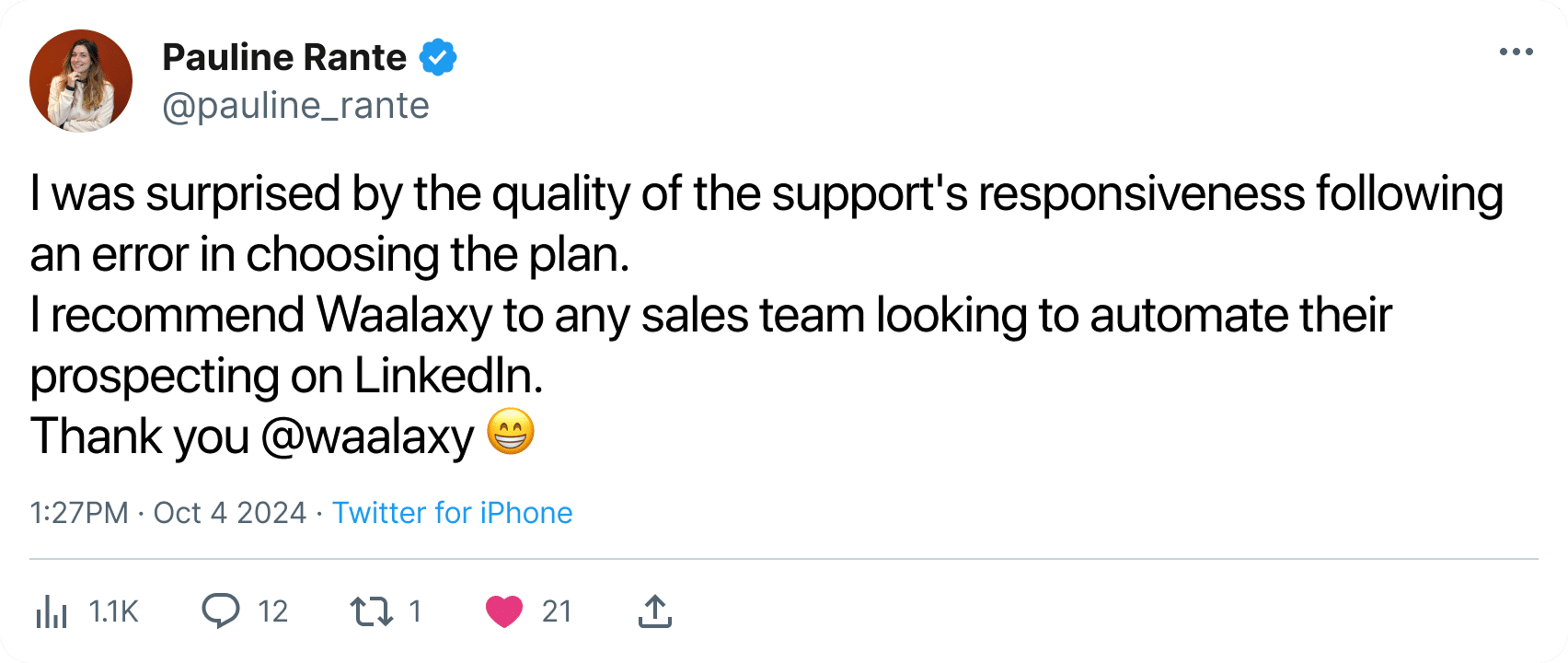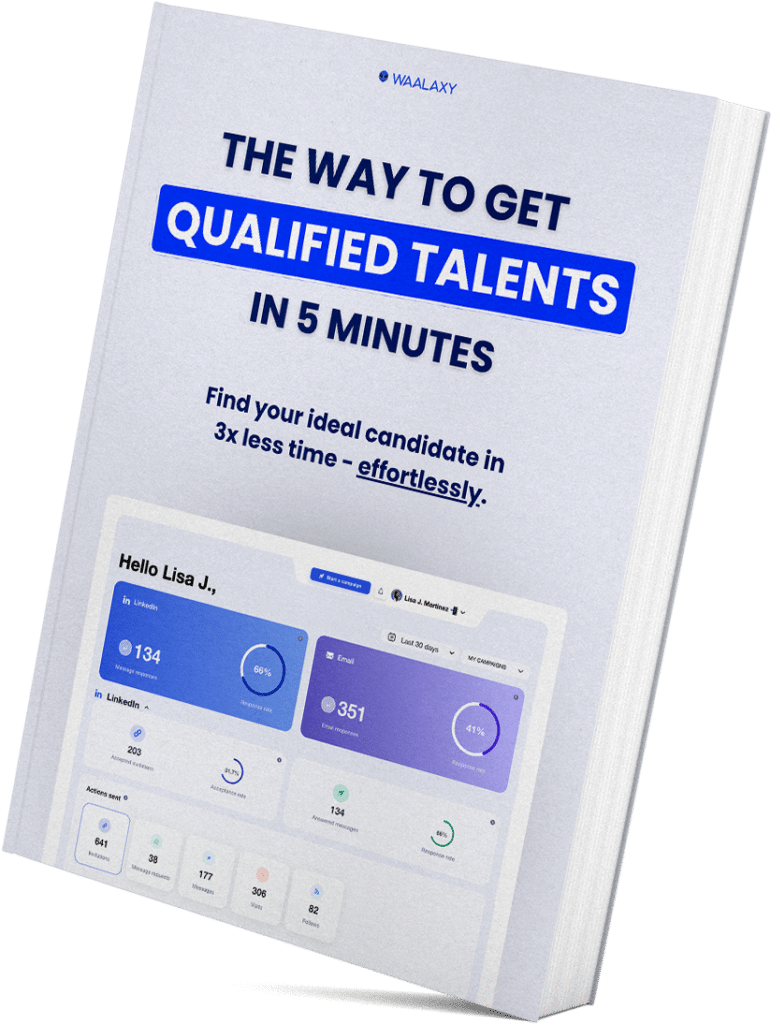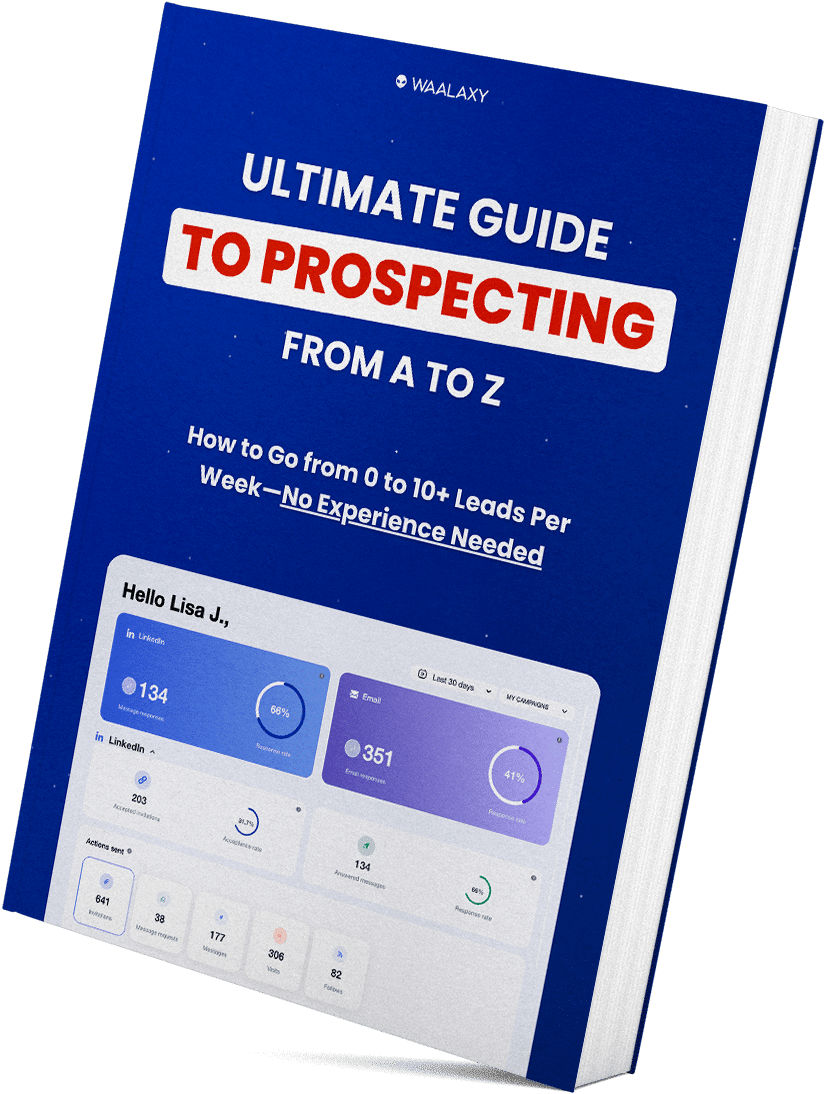- What’s LinkedIn for?
- The best alternatives to LinkedIn for effective recruiting
- LinkedIn Alternatives for generating B2B leads
- LinkedIn alternatives to develop your brand image
- Alternatives to LinkedIn for expanding your professional network
- LinkedIn Alternatives for monitoring
- Find a job (really) elsewhere than on LinkedIn
- How about a recap of the alternatives to LinkedIn?
- Frequently asked questions
LinkedIn has become the professional network of choice. It’s the place to recruit, prospect and share expertise… but it’s not without its limits 🙃
Whether you’re looking for better sales performance, more effective recruitment or simply a new way to develop your online presence, there are many LinkedIn Alternatives today that are just as powerful and sometimes even more suited to your goals.✨
In this article, we present 30 alternatives to LinkedIn, classified by use case: B2B prospecting, recruitment, visibility, networking and business intelligence.👇🏻
What’s LinkedIn for?
Before we share the best LinkedIn Alternatives, let’s take a moment to understand what LinkedIn allows you to do and why you might want to get out of it (at least a little).👀
Since its creation, LinkedIn has established itself as the essential platform for everything to do with the professional world. Whether you’re an employee, recruiter, entrepreneur, freelancer or in the midst of a career transition, it’s often the first online showcase to promote your profile, your business or your projects.🤩
Here’s what we usually do:
- 🧠 Build your personal branding (posts , comments, newsletters).
- 💼 F ind a job or source candidates for a position.
- 🔍 Prospect for new B2B customers.
- 🤝 Develop your professional network.
- 📈 S hare professional content and follow industry trends.
But let’s be honest: in 2025, LinkedIn is showing its limitations.
- Too much noise 🔊 (and not enough commitment).
- Powerful features… but expensive 💸 (Sales Navigator, LinkedIn Ads…).
- A very“corporate” user experience, which may frustrate freelancers, creatives or those who want to think outside the box.🚴🏻♀️
The best alternatives to LinkedIn for effective recruiting
LinkedIn is the HQ of professional recruitment… but it’s not always as effective (or affordable) as we’d like 😅
- Do you get the impression that everyone is fighting over the same profiles?
- Are your ads attracting very few qualified applicants?
- Or do you find Sales Navigator too expensive for your money?
Maybe it’s time to explore other recruiting platforms that are more targeted, sometimes less saturated, or even better suited to your specific needs. 😎
Here are 6 alternatives to LinkedIn for your recruitment!
1. Indeed
With millions of visitors every month, Indeed remains a safe bet for getting your job offers out quickly. The interface is simple, the audience is large, and the matching algorithm works well for the majority of jobs.👩🏻💻
➡️ You can publish free jobs (or sponsored jobs for greater visibility), and manage applications directly from the platform.
What’s more, Indeed integrates pre-selection tests to quickly evaluate candidates.
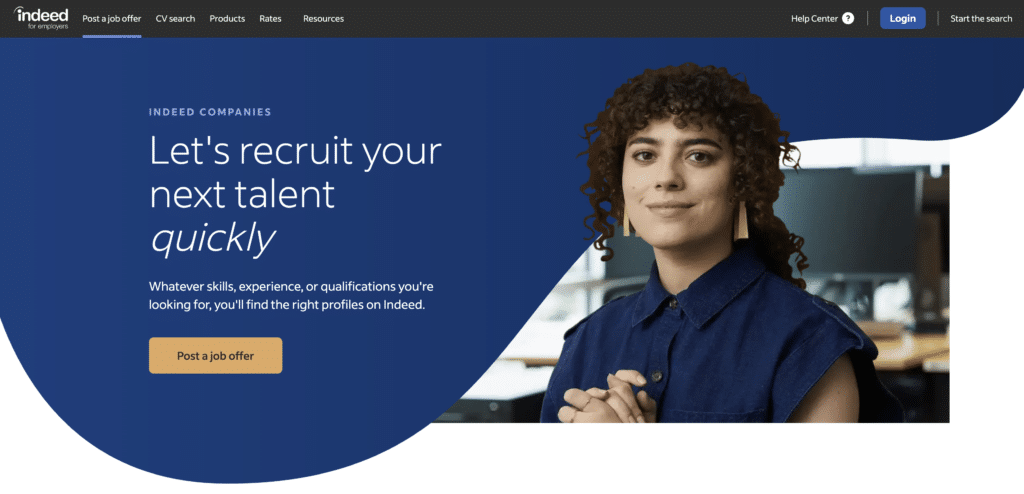
💡 Ideal for:
- Growing SMEs. 📈
- “Jobs in the field” (sales, logistics, after-sales service, etc.).
- Recruit in volume on a national scale.
2. Glassdoor
Glassdoor is more than just a job board. It allows you to publish your job offers, but above all to promote your corporate culture:
- ⭐️ Employee feedback.
- 💸 Salary notation.
- 🗣️ Interview feedback.
- 🎱 Internal benefits info…
🎯 It’s become a reflex for candidates: before applying, they’ll look at your Glassdoor rating!
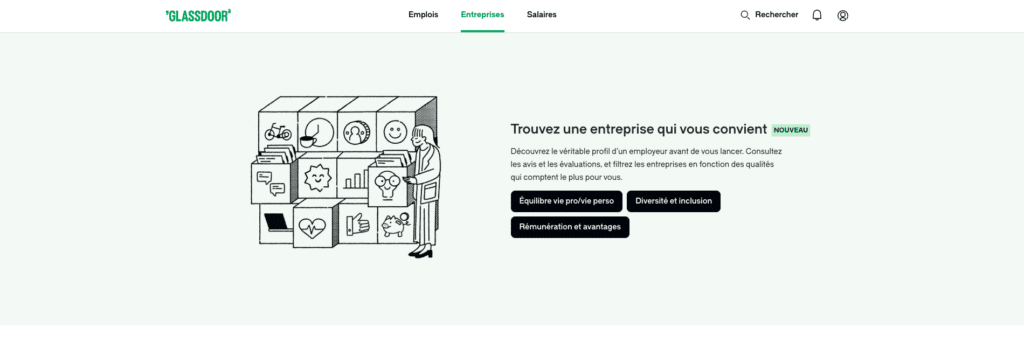
💡 Ideal for:
- Companies that focus on people 💬.
- High-stakes recruitment (executives, rare talents).
- Work on your employer reputation over the long term.
3. AngelList
If you’re recruiting in tech or looking for “start-up ready” profiles, AngelList Talent (now Wellfound) is a must.
You can publish free or paid offers, create a startup page, and browse a database of hyper-qualified profiles in tech, product or growth.👀
The interface is minimalist, very “product”, and efficiency-oriented.
👉 Candidates are often already open to opportunities (no need to convince them for long).
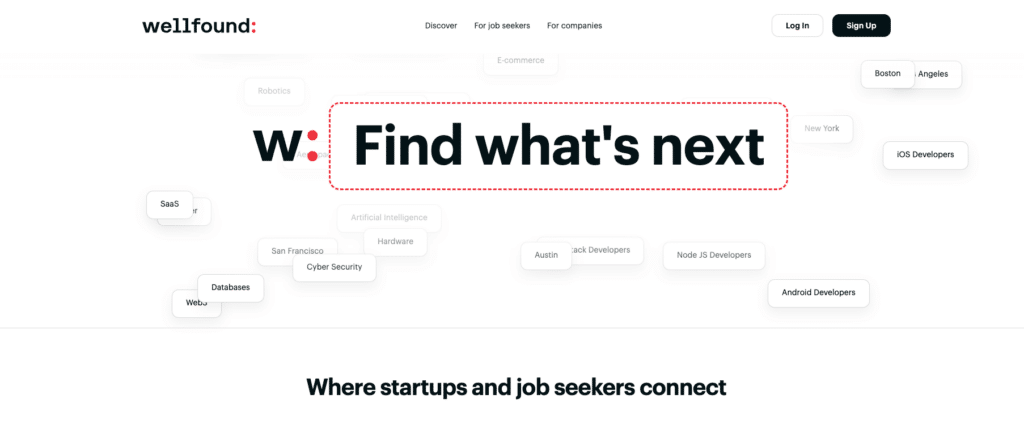
💡 Ideal for :
- Startups early stage 💡
- Scale-ups recruiting tech ⚙️
- International profiles open to remote access 🌍
4. Shapr
Sharp is a professional networking application designed to bring recruiters and talent together. The idea? Get away from the classic “offer > application” model, and focus on affinity meetings based on your goals, common interests and professional DNA to help you in your recruitment process. 🧬
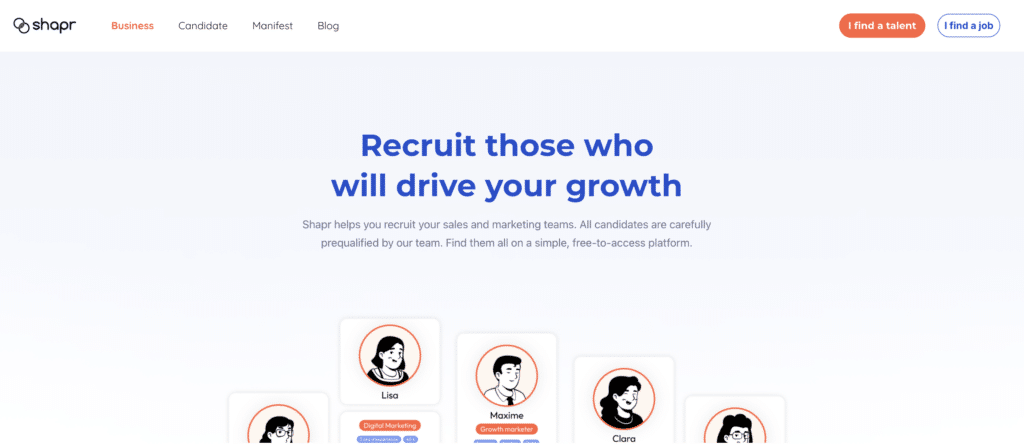
💡 Ideal for:
- Fast-growing startups and scale-ups. 🚀
- Recruiters who rely on cultural fit 🤝
- Hybrid or atypical profiles with high added value 🎨
5. Hire (formerly Recruiterbox)
More than an alternative to LinkedIn, Hire is a lightweight, efficient ATS (Applicant Tracking System).
It doesn’t bring candidates directly to you, but helps you to centralize, sort and track applications in a simple way.
- Multiposting to multiple job boards 💼
- Collaborative management with managers.👨🏻💼
- Visualpipeline for each recruitment step 📊
- Possibleintegration with Slack, Gmail…📮
It’s the perfect tool if you have several offers to manage and not yet a dedicated HR team.
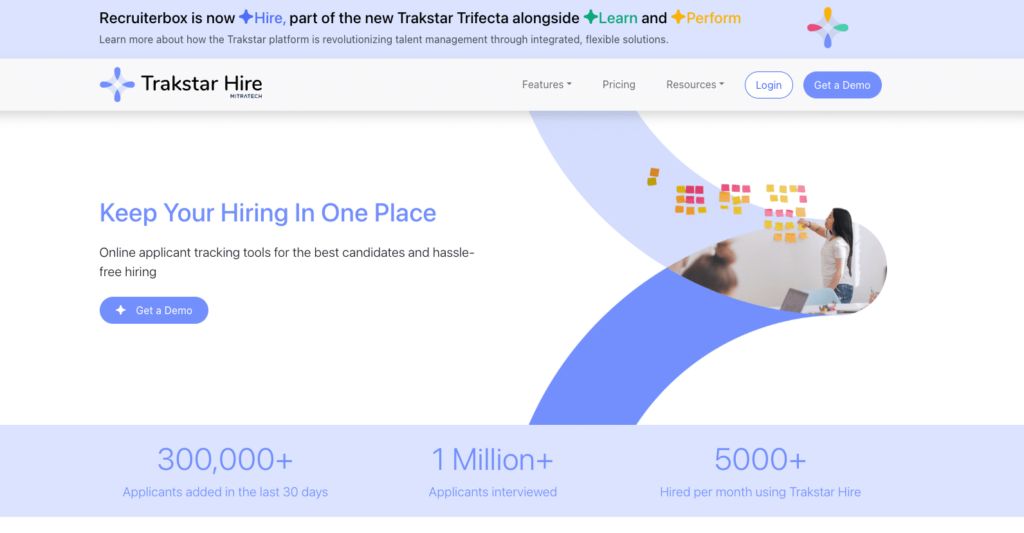
💡 Ideal for:
- Startups and SMEs in structuring. 💼
- Manager-to-manager recruitment.👯♀️
- Save time on time-consuming tasks. ⏱️
6. Xing
If you’re targeting Germany, Austria or Switzerland, forget LinkedIn: Xing is the dominant business network in the DACH region. It functions in much the same way as LinkedIn, with 👇🏻:
- Professional profiles.👩🏻💻
- Job offers.💼
- Thematic groups.📝
- Direct messaging 📨
The audience is smaller, but ultra-qualified forthis market.
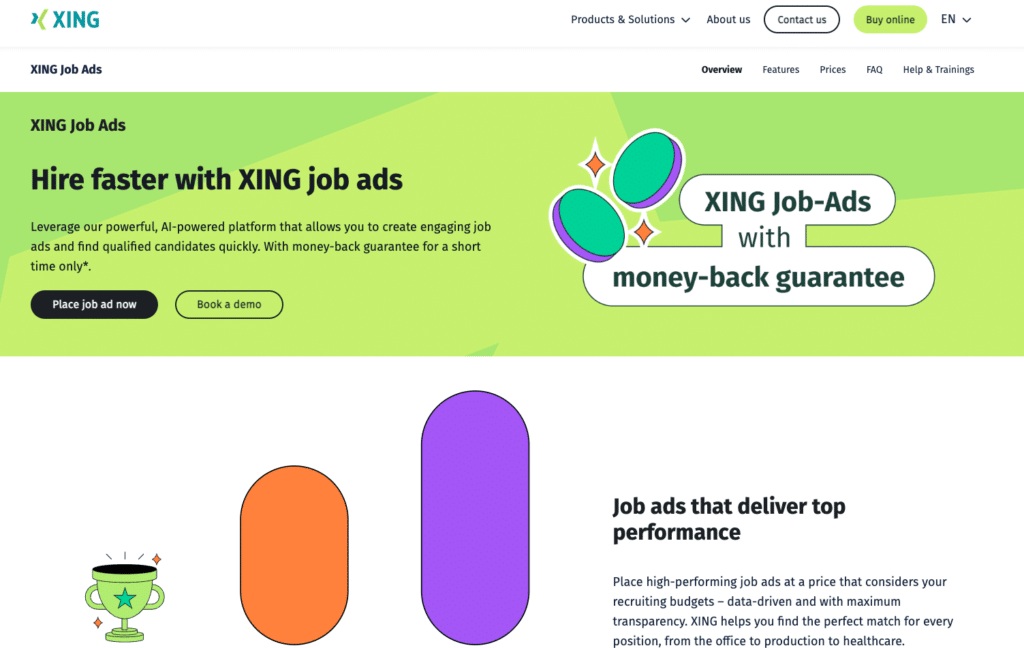
👉 Please note: Xing is also widely used by local recruiters, so be prepared to stand out from the crowd.
💡 Ideal for:
- International expansion. 🌍
- Sourcing German-speaking profiles. 🇩🇪
- Jobs with a high degree of technical specialization. ⚒️
LinkedIn Alternatives for generating B2B leads
LinkedIn is a well-known B2B hunting ground. But, between Sales Navigator costs , InMail message saturation, and declining organic reach, many sales reps and growth marketers are looking for more agile solutions 💡
Fortunately, there are several LinkedIn Alternatives for B2B prospecting, which rely on automation, enriched data or multichannel to get your lead generation campaigns off the ground.😎
Here are our favorite platforms for prospecting without LinkedIn (or in addition to it). 👇
7. Waalaxy
Waalaxy is a hyper-intuitive French tool for automating your LinkedIn and email prospecting sequences. In just a few clicks, you can create personalized, multi-channel campaigns that can be controlled from a clear interface.🤩
🎯 Key features :
- 🟣 Automate LinkedIn invitations.
- 🟣 Automatic messages and reminders.
- 🟣 Multi-channel prospecting scenarios (LinkedIn + Emails).
- 🟣 Import leads from LinkedIn.
- 🟣 Advanced lead segmentation.
- 🟣 Detection of professional emails directly on LinkedIn.
- 🟣 Advanced message personalization.
- 🟣 Dashboard and Analytics.
- 🟣 Integration of AI tools.
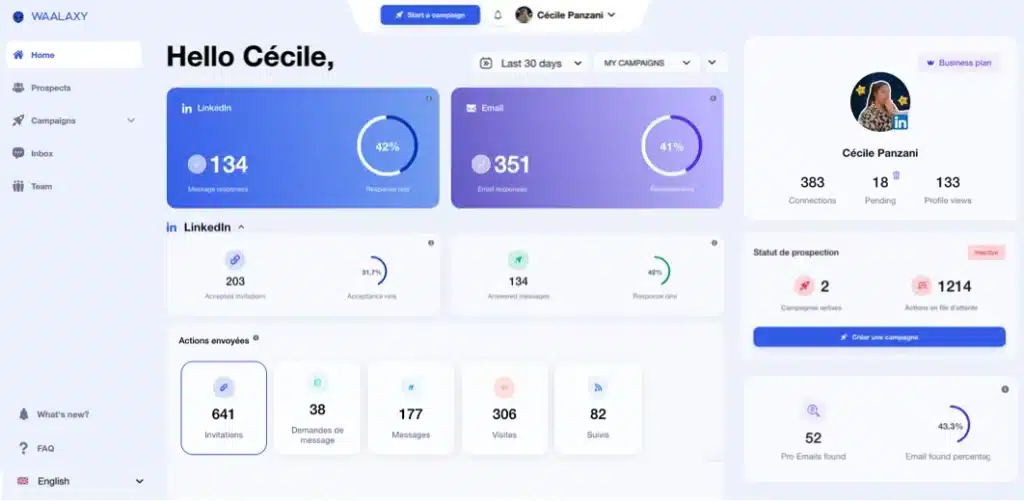
💡 Ideal for:
- Independents.✨
- The Sales.🛍️ teams
- Beginners in automated prospecting 😏
- Recruiters. 👩🏻💻
8. DiscoverOrg
DiscoverOrg, now integrated with ZoomInfo, is a real goldmine for B2B data:
- Direct contact details (email, telephone, LinkedIn…).☎️
- Intent data (companies ready to buy) 📊
- Technical information (tools used by your prospects).⚒️
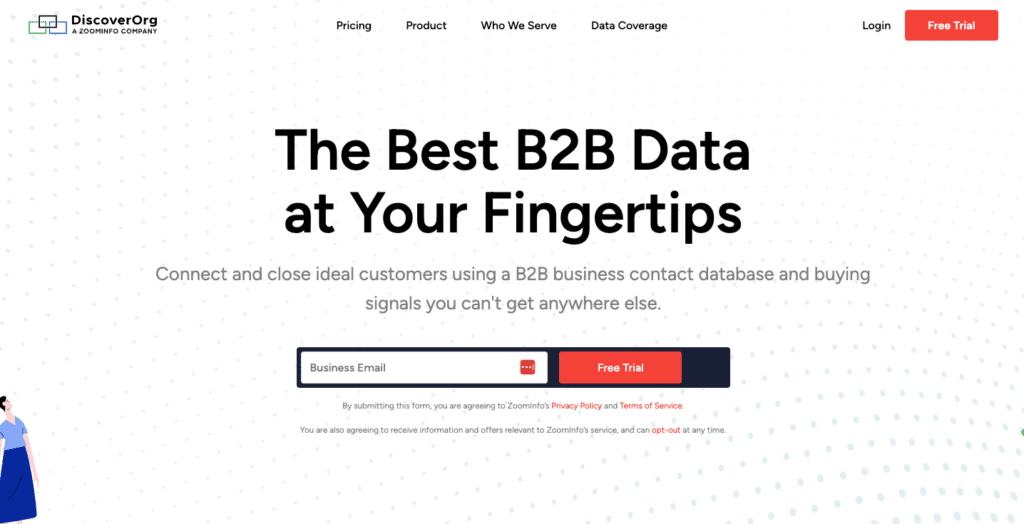
💡 Ideal for:
- Sales teams from mid-market to entreprise.☀️
- ABM (Account-Based Marketing) campaigns 📨
- Structures that want to go very far in data & segmentation 🤓
9. LeadIQ
LeadIQ is ZoomInfo’s little brother. A Chrome extension that lets you 👇🏻 :
- Identify leads from LinkedIn or a website 🔍
- Enrich their information (professional email, telephone, company).📝
- Send them directly to your CRM or sequence.📮
- Follow buy signals 🚨
Simple, fast and very field operation-oriented: perfect if you’re looking for a quick-to-deploy solution.
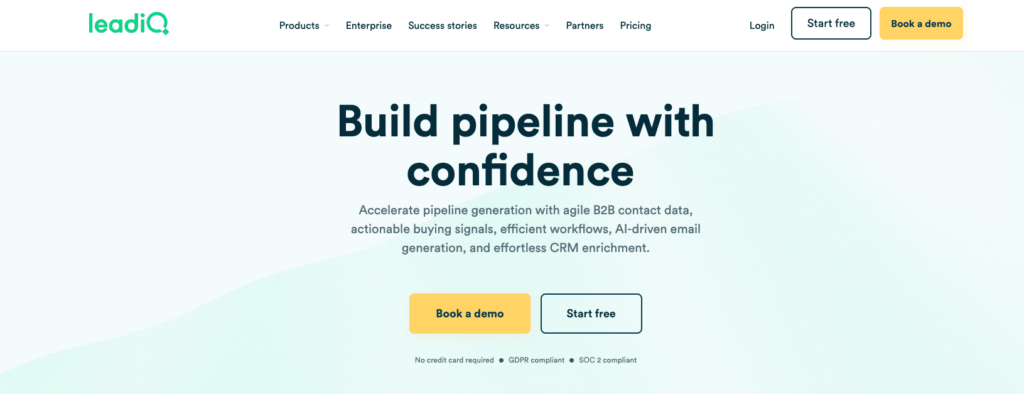
💡 Ideal for:
- Time-saving SDRs (“hunter” recruiters) ⏱️
- Sales working in tandem with marketing.🚴🏻♀️
- Structures that use HubSpot…🔗
10. ZoomInfo
ZoomInfo is one of the leaders in sales prospecting. A complete platform that includes :
- Ultra-detailed database of B2B contacts.
- Advanced segmentation tools.
- Purchasing triggers and behaviors.
- Sales intelligence & ABM functionalities.
It’s more complex (and more expensive) than a tool like Waalaxy, but effective if you have the teams and budget to exploit it to the full.🤓
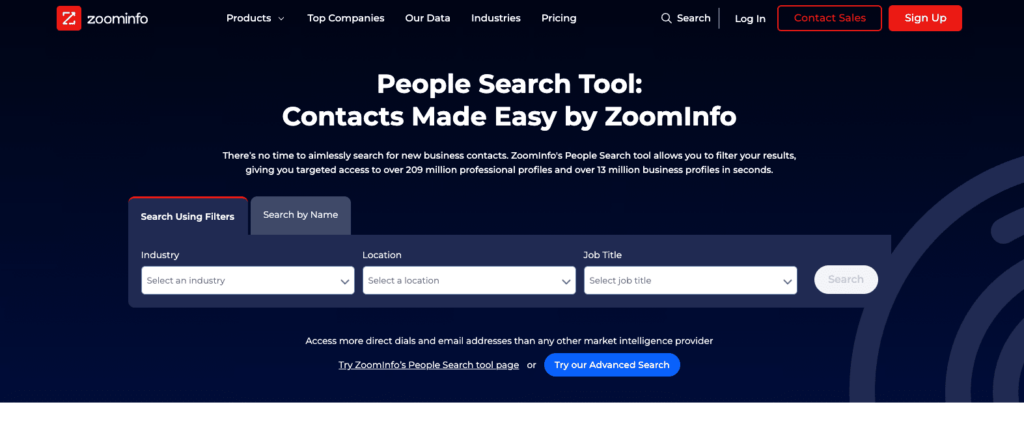
💡 Ideal for:
- Large Sales / Growth / Marketing teams . 👯
- Outbound companies 📲
- Large-scale campaigns 🪜
LinkedIn alternatives to develop your brand image
On LinkedIn, you share your successes, write inspiring posts “” , comment on trends… In short, this is often where your professional image begins.🎭
But here’s the thing: between declining reach, the fickle LinkedIn algorithm and standardized content, it’s becoming harder and harder to really differentiate yourself. 🥲
Good news: there are plenty of other platforms, often better suited to your tone, business or audience, to get your personal or corporate brand out there. ✨
11. Quora
Quora is like a forum for experts. Users ask questions on every conceivable subject, and you can answer them in depth, with your vision, your references, your style.😎
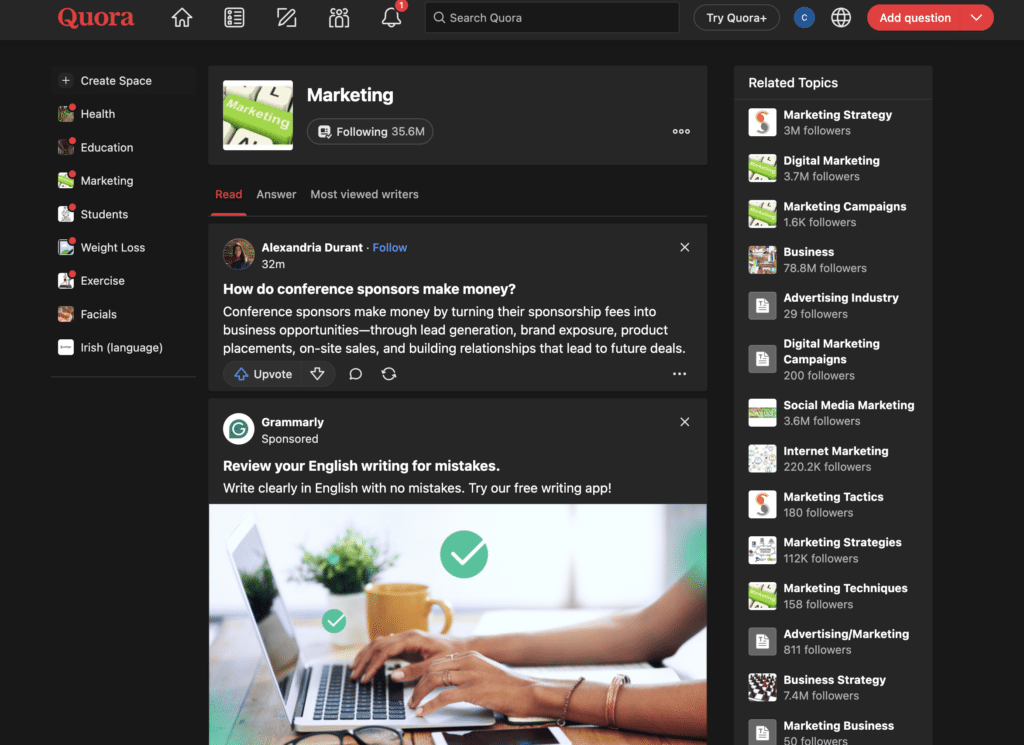
It’s great leverage for 👇🏻:
- Position yourself on a specific subject. 🎯
- Gain visibility with really interested people 👀
- Generate qualifiedtraffic to your content (website, blog, newsletter…).🏎️
12. X (Twitter)
X remains one of the best places to build a strong personal brand, especially in marketing, tech, design or entrepreneurship.☀️
Short formats and the virality of the feed force you to be relevant, regular, and a little “daring.”🙃
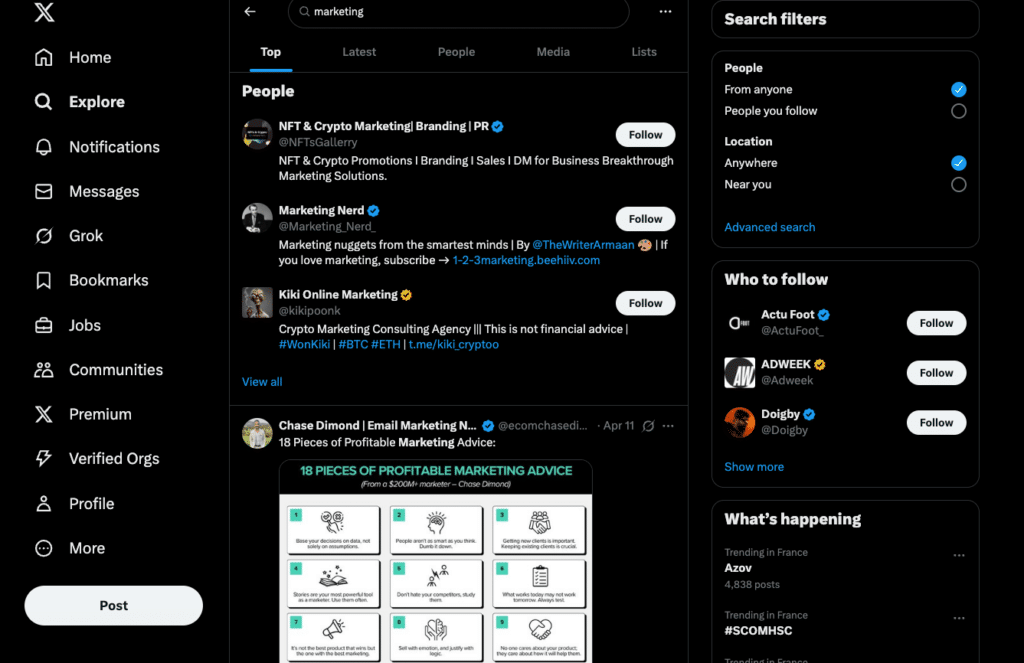
And if you’re active there, you can quickly 👇🏻 :
- Building an engaged community.❤️
- Draw attention to your projects.🕵🏻♀️
- Create bridges to your other content (newsletter, site, product…). 📸
It’s a good tool if you have things to say, often and directly.✨
13. Facebook
We don’t always think about it, but Facebook groups are still ultra-active in many niche professions 💼
Whether you’re a graphic designer, coach, freelancer, craftsman or dev, there are committed communities where you can :
- Exchange with your peers 👯
- Share your progress and content 📸
- Find opportunities without canvassing 👀
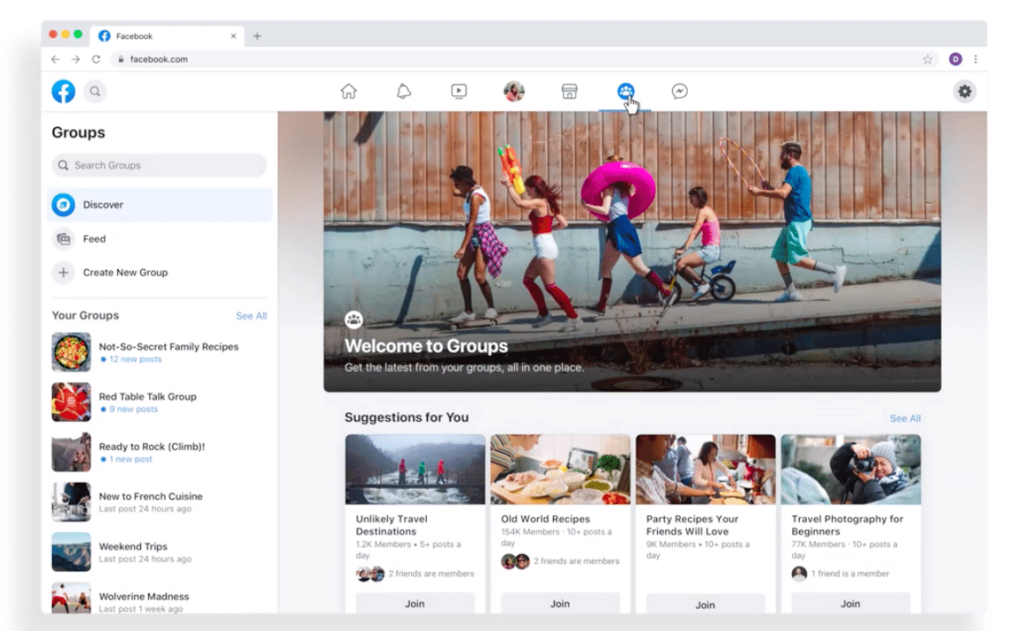
14. Instagram
Long associated with lifestyle, Instagram has become a true visual personal branding tool. 👀
If your activity lends itself to this (creative, coach, freelance, craftsman, entrepreneur…), you can 👇🏻 :
- Show your workbehind the scenes 🤫
- Connect with your audience 🔗
- Work on your brand universe with differentiating content (real, stories and carousels…).🎨
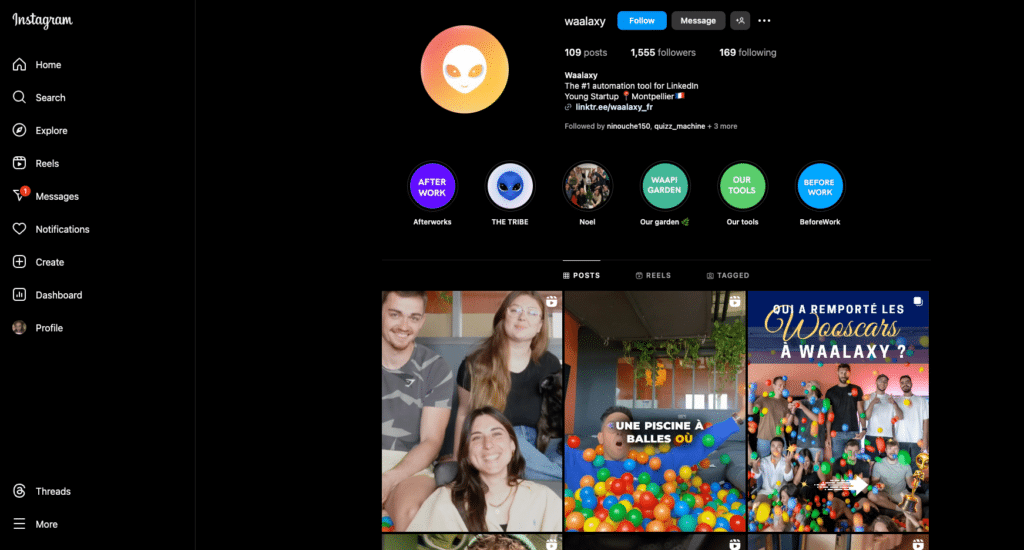
🖌️ Here, form counts as much as substance: it’s the right channel to set a unique tone. ✨
15. Behance (for creative people)
If you’re a designer, graphic artist, illustrator or motion designer, LinkedIn doesn’t necessarily do you justice. Behance, on the other hand, lets you showcase your projects visually, in an immersive format.
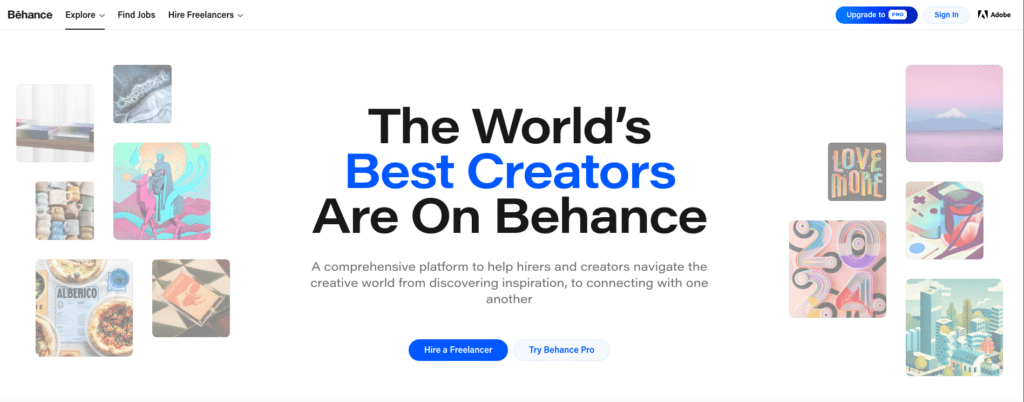
Recruiters and prospects in the creative world are actively looking for talent here, and algoritms will put you ahead if your projects are clear, well presented and regularly published.🎨
Here you can show your creative process, not just the end result. 💡
16. GitHub (for techies)
For technical profiles, it’s the “LinkedIn of devs”. On GitHub, you don’t tell people you’re passionate about code: you show it.🤓
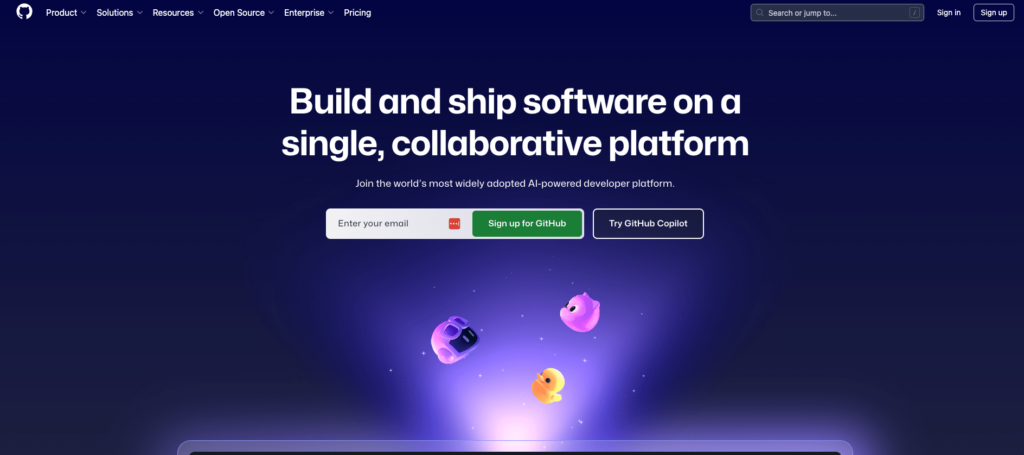
Whether you’re contributing to open source projects, publishing snippets, or documenting your stack, this is the place to be 👇🏻 :
- Enhance your technical expertise. 🧰
- Be spotted by recruiters or CTOs.🙋🏻♀️
- Create a real code signature 💻
And it’s also a showcase for tech companies looking to recruit qualified profiles or position themselves as a brand “ engineering first”.🧑🏽💻
Alternatives to LinkedIn for expanding your professional network
Making useful connections on LinkedIn was easy… 5 years ago.
Today, between copy-and-pasted messages, aggressive pitches and impersonal feeds, the pleasure of real networking is a little lost.
BUT there are other, sometimes unexpected, platforms that allow us to reconnect with what’s essential: authentic exchanges, shared projects, spontaneous encounters.🤩
17. Meetup
If you’ve had enough of cold DMs and chain visios, Meetup is THE platform to reconnect with the human version of networking 🥳
The idea is simple: passionate people organize events (free or paid) around professional or personal topics: marketing, AI, freelancing, entrepreneurship, web dev…
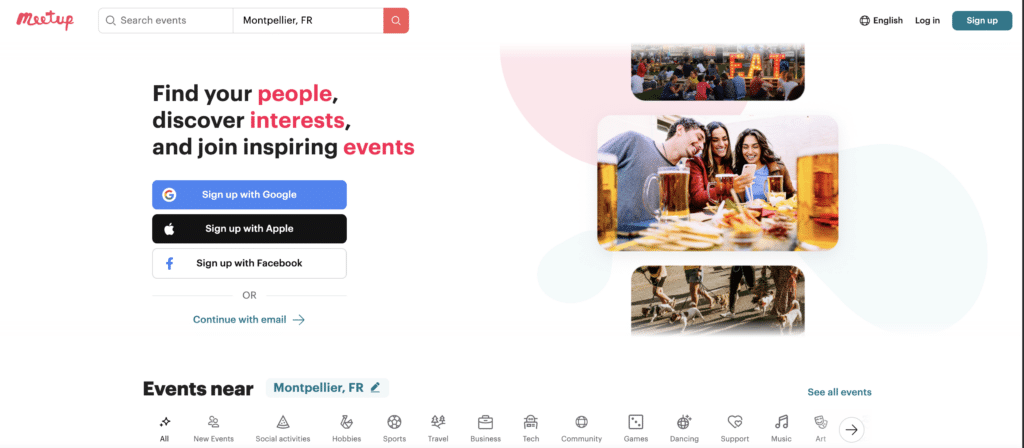
💡 What we like:
- The diversity of formats: breakfasts, talks, workshops, coworking, afterworks…🍻
- The ability to create your own events to attract targeted profiles. 🤩
18. Slack
Slack is no longer reserved for product teams: it now hosts hyper-engaged business communities.🤩
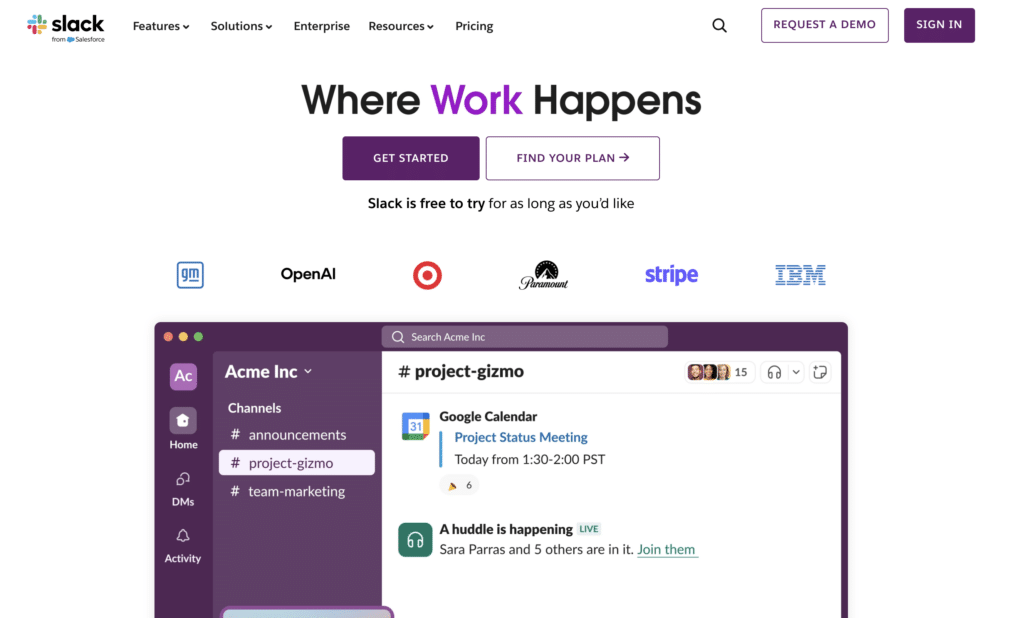
Freelancers, growth hackers, UX designers, copywriters, startup founders… There are dozens (if not hundreds) of public Slack servers where pros exchange every day.🗣️
And it’s not just to chat 👇🏻 :
- #jobs channels to post or find assignments. 🕵🏻♀️
- Feedback to proofread your pitches or landing pages. 📃
Start with Slack communities like Online Geniuses, Superpath (content marketing) or Work in Progress (freelance + indie makers).
19. Discord
Discord attracts creative, tech, maker and freelance profiles who want to network in a more relaxed setting.
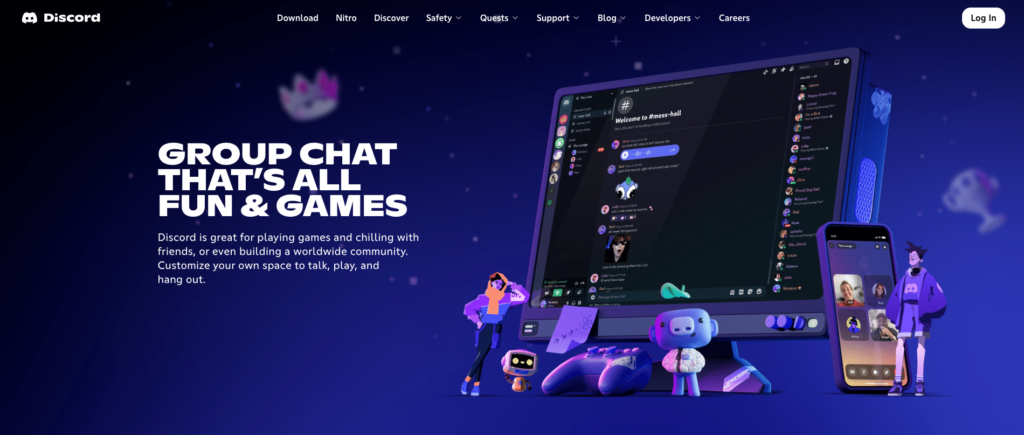
You will find servers by theme 👇🏻 :
- Design, UI/UX. 👩🏻🎨
- AI & no-code tools. 🤖
- Content creators (podcast, video, newsletter…). 🎨
- Freelancing / solo taker. 🧑🏽💻
Discussions take place in writing or by voice, with channels sometimes dedicated to co-creation, feedback, or even virtual coworking.🛜
💡 What’s in it for us:
- Much more natural connections (no forced pitching) ✨
- Direct access to people who are really active in their field.🕺🏼
- Sometimes even… customers who come to you without you having to look for them. 👀
21. Bark
Bark is aimed primarily at freelancers and consultants.
The principle is simple: customers post their needs (copywriting, website, coaching, photography, design, etc.), and you receive qualified leads that you can contact (via a credit system).💰
It’s more oriented “customer generation” than pure networking, but it’s still a good gateway to growing your network through action.🎯
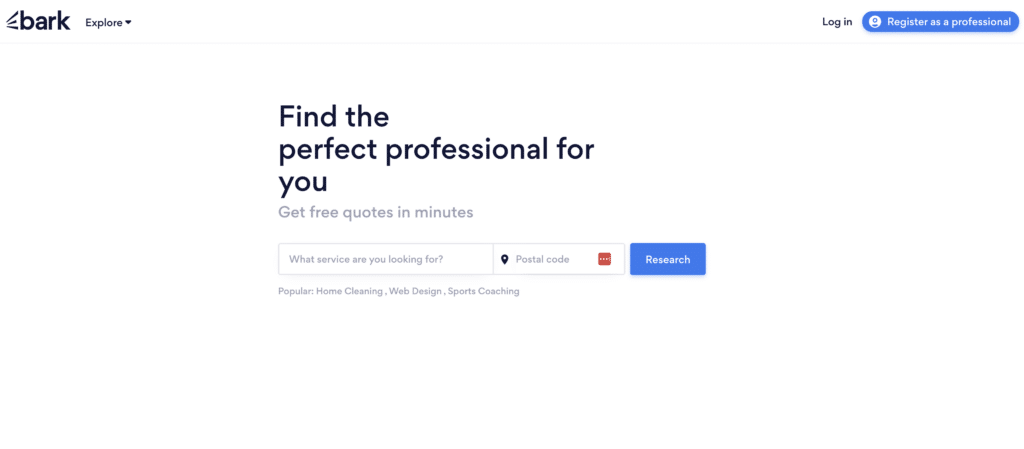
💡 The real advantage?
- No cold calling. 🥶
- You gain visibility when a customer is looking for “someone like you” 😉
22. Opportunity
Opportunity uses AI to connect you with profiles who share your business objectives.
You indicate your intentions (prospecting, recruiting, finding a mentor, selling a service…), and the platform connects you with the right contacts. 😌
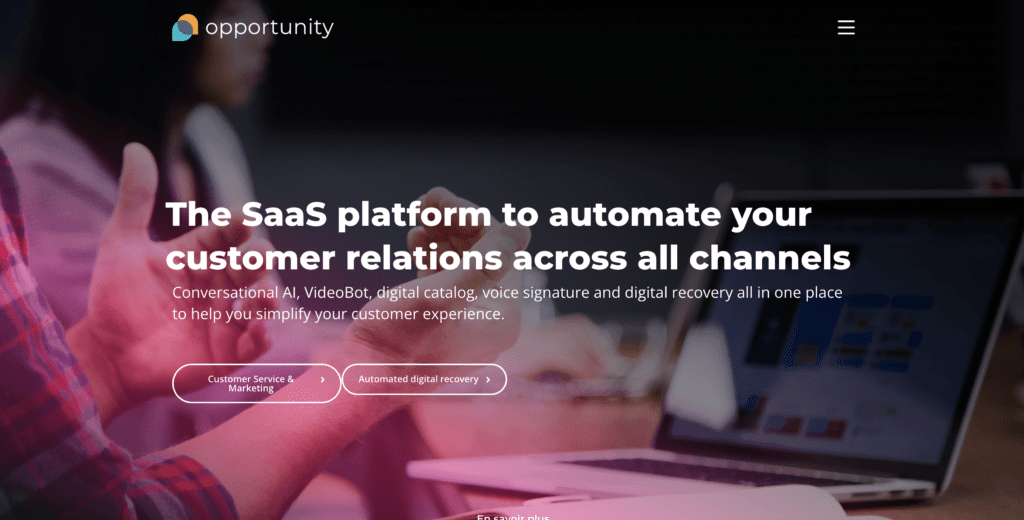
💡 This changes everything:
- We don’t spend hours on it ⏰
- Connections are truly contextual 🥸
- The first message is easier, because you have a common goal from the start.🎯
LinkedIn Alternatives for monitoring
Keeping an eye on LinkedIn has become a perilous exercise:
🔁 Between posts of “inspirational storytelling” and vague marketed opinions, you sometimes have to scroll for a long time before coming across really useful info.🙃
Fortunately, there are tools and platforms that go much further to help you :
- Keep abreast of trends in your sector 🤩
- Identify interest or buy signals.🛍️
- Keep an eye on your competitors (👀).
- And stay up to date without drowning 🌊
24. Reddit
Reddit is where the real discussions take place. You’ll find ultra-specialized communities (subreddits) by topic, where pros, enthusiasts and the curious share insights, resources, feedback.😌
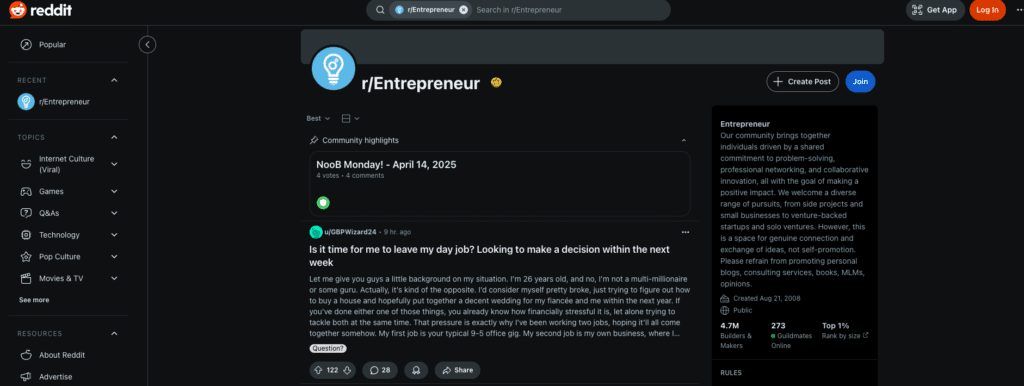
➡️ Examples to follow :
– r/Entrepreneur
– r/SaaS
– r/marketing
– r/digitalnomad
– r/technology
25. Google Alerts
Google Alerts is the perfect way to monitor specific keywords, without having to manually search for them every day 🤓
You’ll receive a notification as soon as an article, news item or resource contains the word(s) you’ve selected (competitor name, business expression, innovation…).😇

– Put quotation marks around exact phrases (“social selling“).
– Create alerts on your competitors to see where and how they are mentioned.
– Set up local or sector alerts.
26. BuzzSumo
BuzzSumo is a content analysis tool that allows you to :
- See which articles / posts are currently exploding on a given topic
- Follow what works best with your competitors
- Identify the influencers or creators with the most reach
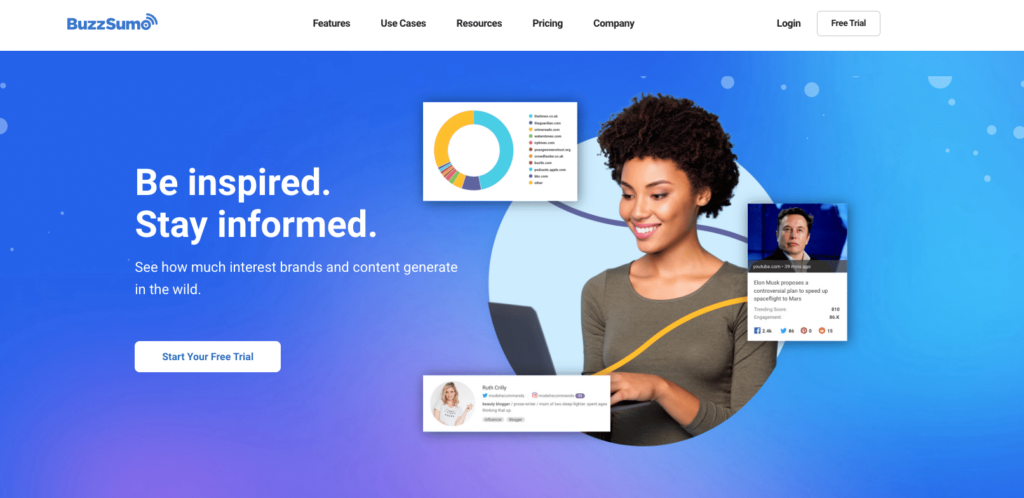
It’s THE platform to have on hand for :
- 🧠 Find content ideas.
- 📊 See which formats work.
- 🚀 Don’t miss the trends that buzz.
Even the free version gives you a good overview of popular content by theme.
27. ResearchGate (scientific)
LinkedIn is not ideal for research, innovation or scientific monitoring.👩🔬

That’s where ResearchGate comes in: it’s a network of researchers, academics and R&D profiles who share :
- Their work and publications.⚗️
- Paper previews 📑
- Discussions on specific topics 🧪
Useful if you work in biotech, healthcare, the environment or engineering, or if you collaborate with academic profiles.
It’s also a great source of inspiration for creating high value-added content(white papers, case studies, webinars).
Find a job (really) elsewhere than on LinkedIn
We know the drill: “Update your profile, polish your resume, apply on LinkedIn…”
But in real life? On LinkedIn, job offers are often already saturated with candidates, recruiters are in high demand, and the algorithm is not always kind to junior or atypical profiles.🥲
28. The Muse
The Muse is an American job site like no other.
Here, you don’t just see a cold, impersonal job description: you’re immersed in the world of the companies that are recruiting. Each ad is accompanied by 👇🏻:
- Team videos.
- Office photos.
- Employee testimonials.
- Corporate culture, benefits…
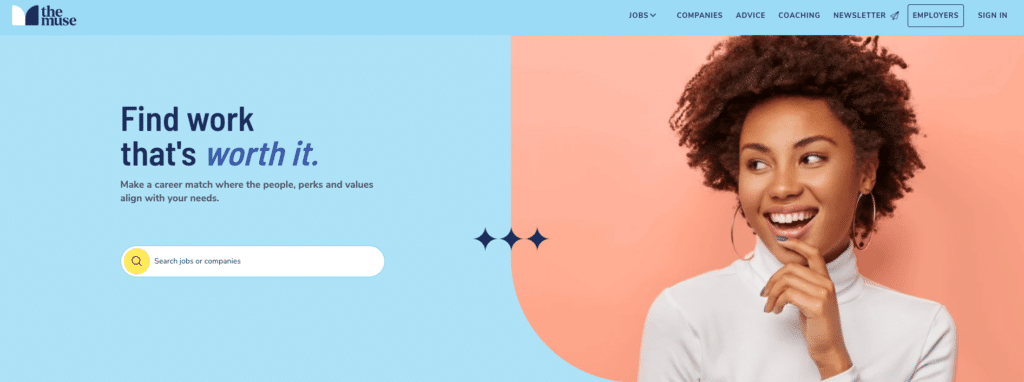
Our aim? To help you apply where you really want to work.
💡 This changes everything:
- A real enhancement of “fit cultural”, not just technical skills.😌
- A selection of often committed and innovative companies 😇
- Support content (coaching, CV advice, career guidance, etc.).👩🏻🏫
29. Jobcase
Jobcase is an employment platform focused on accessibility and inclusion.
Very popular in the United States, it combines :
- Job offers (permanent, fixed-term, temporary…). 💼
- A professional social network 👀
- A self-help community 🤝
Unlike LinkedIn, you don’t need to have an ultra-linear career path or a prestigious degree: here, we value atypical career paths, concrete skills and the desire to evolve. 📈
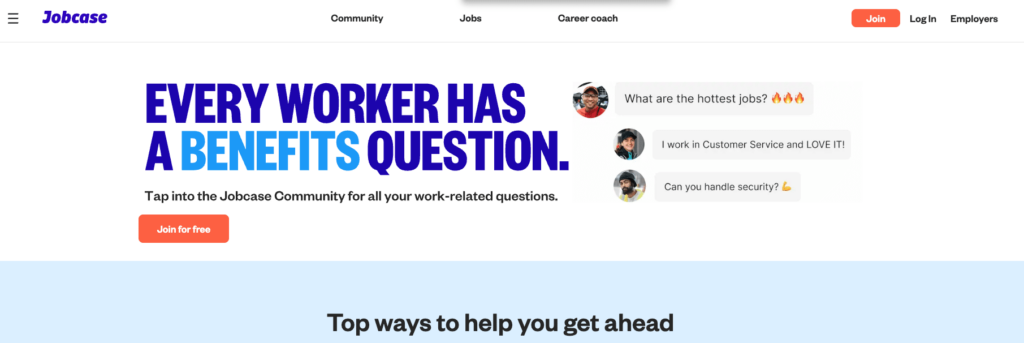
💡 Highlights:
- Simple, fluid interface (even for less digital profiles) 🤓
- Job suggestions tailored to your location and experience 🌍
- Forums where members help and advise each other ✨
30. Goodwall
Goodwall is the LinkedIn for students, graduates and first jobs.
Designed for 16-26 year-olds, the platform features 👇🏻:
- Projects, skills and passions rather than the classic CV 🤩
- Challenges to boost your profile.💪🏻
- A caring community where you can introduce yourself, ask questions, seek feedback.🥰
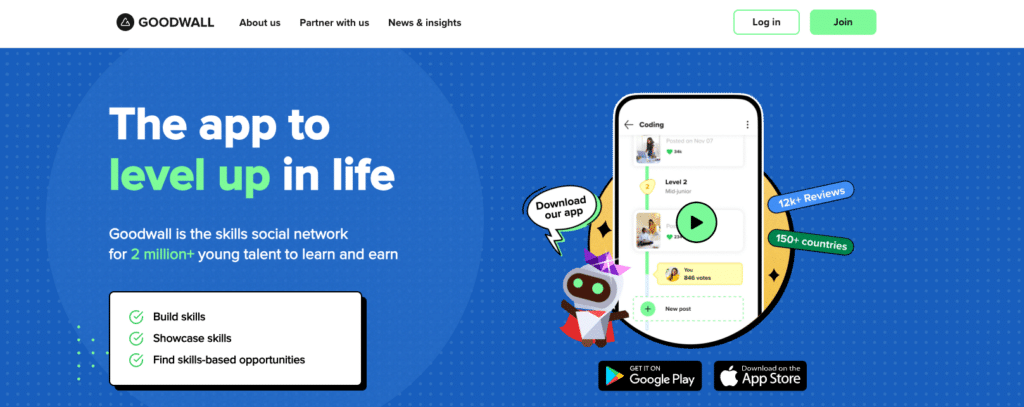
💡 What you’ll find :
- Opportunities for internships, work-study programs, volunteer work and student jobs. 🧑🎓
- Career advice for beginners 😌
- An ultra-intuitive mobile-first experience. 😇
How about a recap of the alternatives to LinkedIn?
LinkedIn is still a giant in professional networking, but it’s no longer alone in the field.
Whether you want to recruit differently, prospect more effectively, develop your image, network with more authenticity or simply conduct more targeted intelligence, you’re now spoilt for choice. 😍
Test, mix and explore these alternatives to LinkedIn…👇🏻
| 🎯 Objective | 🌐 Recommended platforms |
|---|---|
| Effective recruitment | Indeed, Glassdoor, AngelList, Sharp, Recruiterbox, Xing |
| Generate B2B leads | Waalaxy, DiscoverOrg, LeadIQ, ZoomInfo |
| Develop your brand image | Quora, X (Twitter), Facebook, Instagram, Behance, GitHub |
| Expand your professional network | Meetup, Slack, Discord, Bark, Opportunity |
| Strategic intelligence | Reddit, Google Alerts, BuzzSumo, ResearchGate |
| Find a job differently | The Muse, Jobcase, Goodwall |
Frequently asked questions
Can LinkedIn be completely replaced by other platforms?
Yes… and no 🙃
Today, LinkedIn remains the world’s largest professional network, with powerful features (recruitment, B2B prospecting, content, networking…).
But it’s not always the most effective for achieving your specific goals.🎯
Some platforms like AngelList, Waalaxy, Slack or Goodwall do better than LinkedIn… on a targeted use: recruiting in tech, generating multichannel leads, networking between freelancers or young graduates..🎓
The key ? Don’t bet everything on a single channel. LinkedIn can remain your main “hub”, but it benefits from being complemented by more specialized tools for each stage of your professional career.🤓
What are good networking practices?
Good question! Whether on LinkedIn or its alternatives, effective networking is always based on the same pillars:
- ✅ Be clear about your intention: are you looking for a job? a partner? a customer? a mentor? The more precise your objective, the more relevant your connections will be.
- 💬 Personalize your messages: forget copy and paste. A short, sincere and targeted message has 10 times more impact than a generic pitch.
- 🎁 Bring value first: comment, advise, recommend, share. The network is built on giving, not asking.
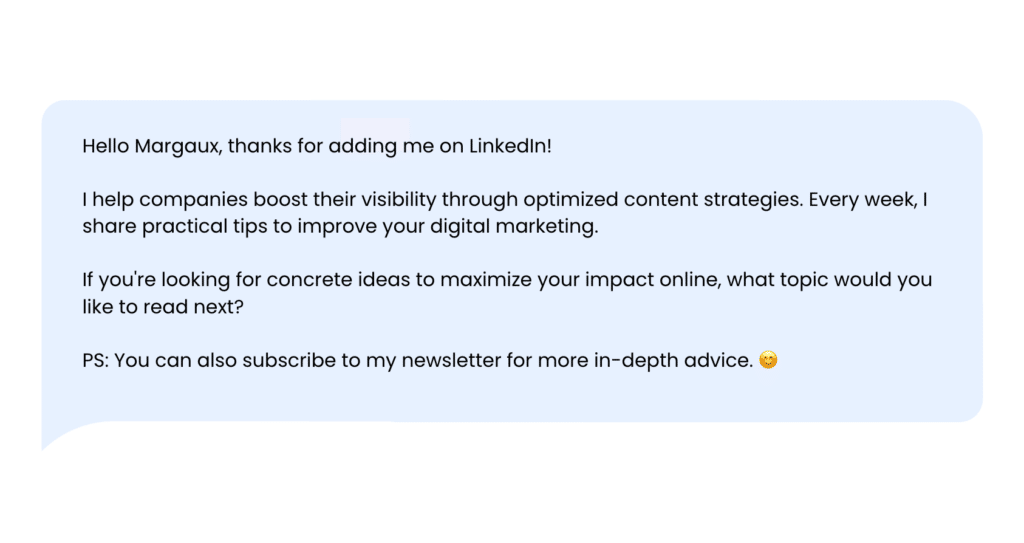
- 🌱 Be regular, not insistent: you don’t need to spend 3 hours a day, but a weekly routine (replying to messages, commenting on 2-3 posts, following up with 1 contact) is enough to create opportunities.
- 👥 Explore other circles: forums, events, Slack, Discord communities… Networking is also played out outside the usual paths.
By now you all know about LinkedIn alternatives.🚀


